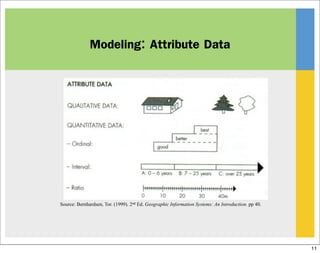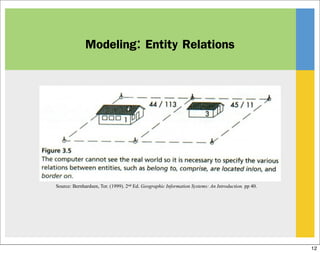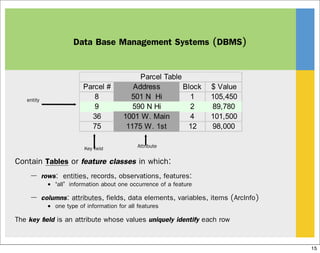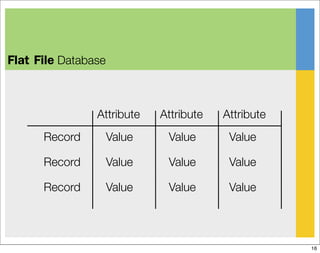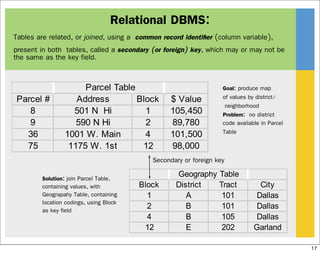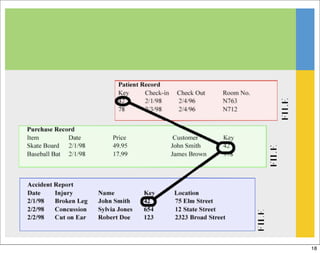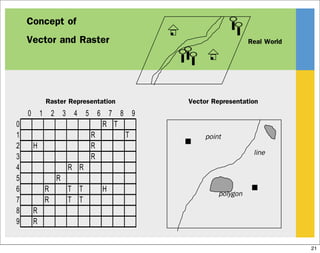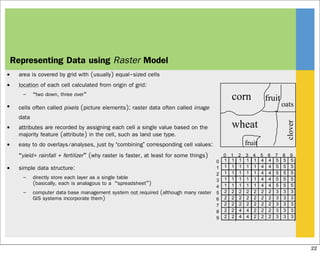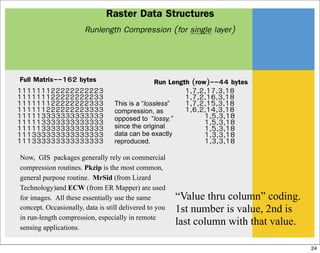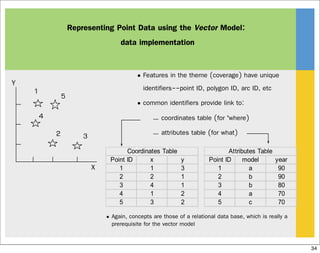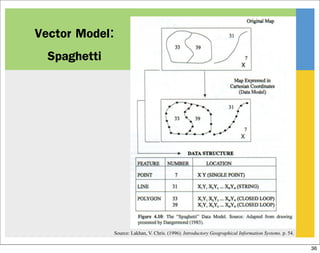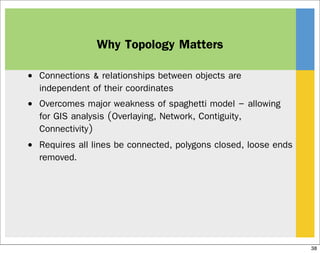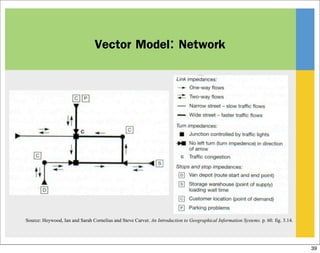This document discusses how geographic features are represented in GIS data structures. Spatial data represents the location of features, while attribute data describes characteristics. Features can be represented using vector or raster data models. Vector models store location data as x,y coordinates and connect them to form lines and polygons. Raster models divide space into a grid of cells and store a single value for each cell. Relational databases are commonly used to organize spatial and attribute data for GIS analysis and mapping.





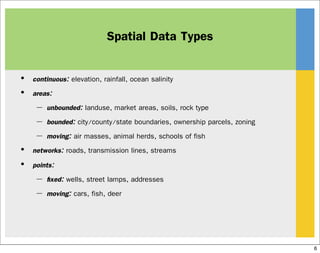
![Attribute data types
Categorical (name):
– nominal
• no inherent ordering เช่น land use
types, county names
– ordinal
• inherent order เช่น road class;
stream class
• บางครั้งก็แสดงเป็นตัวเลขที่ถือเป็นเพียงแค่
ชื่อเฉพาะ ไม่นำไปใช้ในการคำนวณ
Numerical
Known difference between values
– interval
• No natural zero
• can’t say ‘twice as much’
• temperature (Celsius or
Fahrenheit)
– ratio
• natural zero
• ratios make sense (e.g. twice as
much)
• income, age, rainfall
• ค่าตัวเลขเป็นเลขเต็ม integer [whole number]
or หรือจุดทศนิยม floating point [decimal
fraction]
7](https://image.slidesharecdn.com/2-151106173605-lva1-app6891/85/GIS-data-structure-7-320.jpg)



